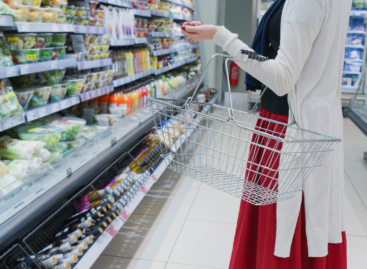2020: The year when Hungarian consumers were forced to step on the digital moving sidewalk
2020 increased the proportion of consumers who are shopping online – and this is also true for FMCG shopping. Which factors were the driving forces behind this trend?


Krisztina Bodnár
business development
manager
GfK
It became important for much more people to be able to shop in any part of the day. Consumers can now order any time, but delivery depends very much on the logistics capacity of the delivery company. There were months in 2020 when shopping in physical stores was only allowed in certain hours of the day, but not all online delivery slots were available either. Today the situation is much better: we can choose to order not more than a couple of items and they will be delivered even in the most impossible hours if that is what we want.
More tolerant and informed consumers
Consumers are more tolerant with offers made to them on various online platforms. They have realised that this isn’t Big Brother watching them, these recommendations can be very useful if they are relevant, because they are made based on the shopping habits of similar consumers. In 2020 a bigger proportion of consumers checked a product in a physical store and then used their mobiles right there to find out whether the same product was available cheaper elsewhere: nearly 40 percent of mobile device owners with an internet connection did this!
Smartphones everywhere
94 percent of 15-59 year old internet users own a smartphone and use it for going online. For instance back in 2014 most people used their smartphones or tablets for online browsing only if there was some really important reason to do so. In 2020 a large proportion of consumers manage their finances online or study using a mobile device. Also a bigger proportion of consumers do contactless bank card payment minimum once a week. Mobile banking app use is also spreading fast. Almost every second user in the 15-59 year age group visits video sharing websites daily. What is more, the 15-29 year age group spend 154 minutes with watching videos, and 40 percent does this on their smartphone. In the age of Netflix, HBO GO and streaming services in general, more than 60 percent of viewed content is so-called ‘chosen content. ’
Every generation has gone digital
The pandemic has made every generation go digital. Student are using online education material, grandparents are watching Netflix and government websites have speeded up major development projects, in order to facilitate large-scale online affairs management. People are now buying FMCG products online and although sometimes there are substitute products in the delivered parcel, soon consumers will understand that the same thing could happen if they asked a family member to do the shopping for them. Both customers and delivery personnel need be more tolerant, but things are definitely going in the right direction. //
Related news
Private labels make plant-based alternatives cheaper
🎧 Hallgasd a cikket: Lejátszás Szünet Folytatás Leállítás Nyelv: Auto…
Read more >How to avoid the hassles of online shopping?
🎧 Hallgasd a cikket: Lejátszás Szünet Folytatás Leállítás Nyelv: Auto…
Read more >Record-breaking Black Friday in online orders
🎧 Hallgasd a cikket: Lejátszás Szünet Folytatás Leállítás Nyelv: Auto…
Read more >Related news
Christmas shock in commerce: for the first time, we can pay with bank cards in fewer places
🎧 Hallgasd a cikket: Lejátszás Szünet Folytatás Leállítás Nyelv: Auto…
Read more >Hungarian Confectionery Manufacturers Association: trends in 2025 and prospects for 2026
🎧 Hallgasd a cikket: Lejátszás Szünet Folytatás Leállítás Nyelv: Auto…
Read more >Most grocery chains will be open until noon on December 24th
🎧 Hallgasd a cikket: Lejátszás Szünet Folytatás Leállítás Nyelv: Auto…
Read more >






